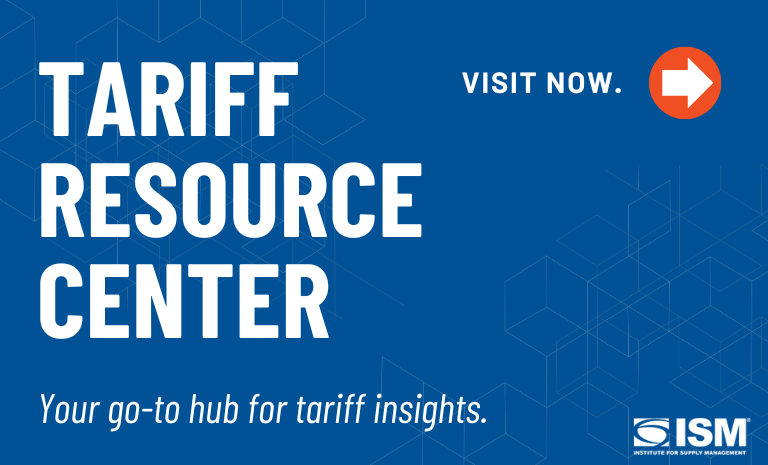Risk Update: Knowing and Managing Financial Threats

Companies and their supply chain organizations are in a new era of financial risk, which was affirmed by another high-profile bankruptcy last month.
American auto parts maker First Brands filed for bankruptcy protection amid reported liabilities of more than US$10 billion. The financial collapse of the company, whose product portfolio includes Raybestos brakes, Trico wiper blades and FRAM filtration products, stunned investors and sparked a U.S. Department of Justice inquiry.
“For a long time, companies didn’t fail because (low interest rates meant) they could borrow money with impunity and they didn’t have to pay very much for that debt,” James Gellert, executive chair and former CEO of RapidRatings International, said last week during Institute for Supply Management®’s (ISM®) “Quarterly State of Risk Update” member-exclusive webcast.
Until a couple years ago, companies would report that it had been a long time since their supply chains experienced bankruptcies, Gellert said. “So, they felt they were doing things right,” he said. “We haven’t heard that (sentiment) as much in the last two years.”
Gellert co-hosted with ISM CEO Thomas W. Derry. While tariffs (of course) and the fire at a Oswego, New York plant that supplies 40 percent of aluminum used by the U.S. auto industry were discussed, financial risk dominated the hour-long webcast.
Information and visibility are critical for a company to protect itself, Gellert said: “You can’t manage risk that you don’t know.”
The key takeaways:
Private companies face heightened financial stress. There has been a surge in bankruptcy rates among private companies, to levels not seen since 2010.
Private firms, especially those in the middle market and backed by private credit, are more vulnerable due to the opaque nature of their funding. This lack of transparency makes it difficult for supply chain managers to assess risk accurately, as financial stress can remain hidden until it’s too late.
“Bankruptcy rates are at the highest they’ve been since 2010,” Gellert said. “We’ve got a 10-to-1 ratio of private companies filing for bankruptcy relative to public companies. And quite interestingly, we’ve got about a 2-to-1 ratio of restructurings to bankruptcies. Within more normal environments, you would see a 1-to-1 ratio.”
Supply chain resilience depends on deeper tier visibility. Approximately 75 percent of supply chains are composed of private companies, often beyond the first tier. The financial health of these deeper-tier suppliers is deteriorating, which means organizations must look past their immediate vendors and assess the health of Tiers 2 and 3 — and beyond.
Failing to do so can leave companies exposed to unexpected disruptions. “As go private companies and the stresses and trends and the things that are happening to them, ultimately goes the resilience within a supply chain,” Gellert said.
Added Derry, “Of late, (ISM has) been advising companies to look into their supply bases beyond the first tier in particular, down into Tier 2 and Tier 3 and beyond if they can, because of the deterioration we’re seeing in financial metrics of private companies.”
Rising interest rates and inflation are squeezing margins. The end of a long period of low interest rates, combined with inflationary pressures on labor and goods, has led to significant declines in earnings before interest, tax, depreciation and amortization (EBITDA) and net profit for middle-market private companies.
Many are struggling to cover interest expenses, with up to 25 percent unable to pay annual interest from operating income, Gellert said. This financial strain increases the risk of disruptions and failures within the supply chain.
“Roughly between 20 percent and 25 percent of companies are under one times interest coverage,” Gellert said. “To say that in another way, a quarter of private supply chains in this middle market band can't pay their interest expense for an entire year.”
Factoring is a tool with a trade-off. Factoring — a process where a company sells receivables at a discount to a third party — and supply chain finance are increasingly used to manage working capital, but each comes with risks.
When factoring is overused, it can lead to cash flow issues. Supply chain finance programs (often led by original equipment manufacturers) can provide relief but may also create concentration risk or restrict credit lines. The key is to use these tools judiciously and ensure mutual benefit for buyers and suppliers.
First Brands appeared to, Derry said, “get upside down in terms of payment terms being extended to them and had to factor receivables. Therefore, it didn’t have the cash flows that were expected to maintain the business at its current operating rate.”
Risk management, Gellert and Derry stressed, requires data, collaboration and human intelligence. Effective risk management is not just about avoiding bankruptcy but about identifying early signs of financial deterioration — such as late deliveries, quality issues or reduced innovation.
Organizations must combine artificial intelligence (AI)-driven analytics with experienced human judgment to assess supplier health, align payment terms with supplier capabilities, and foster collaborative relationships that strengthen the entire supply chain.
“If you don’t understand the financial health of your suppliers, and they are 75 percent in this private space … you’ll be caught off guard,” Derry said.

